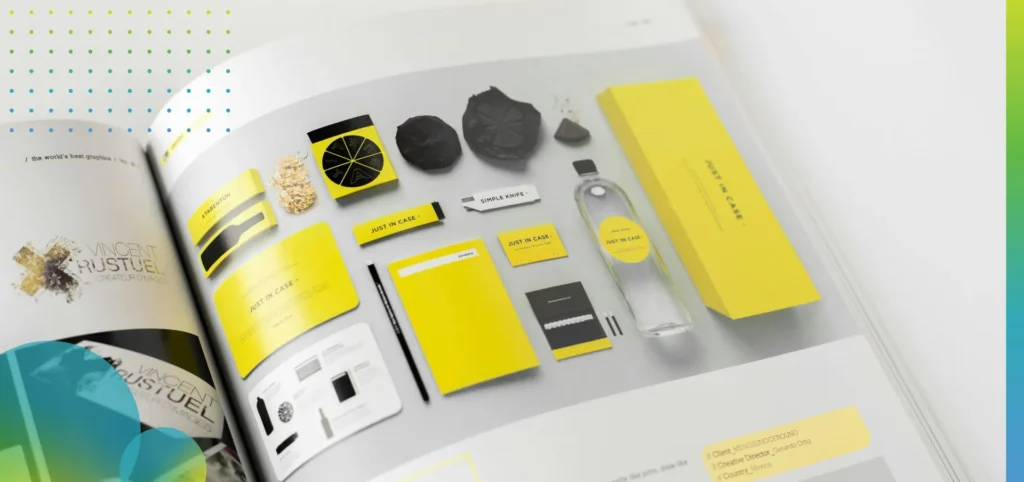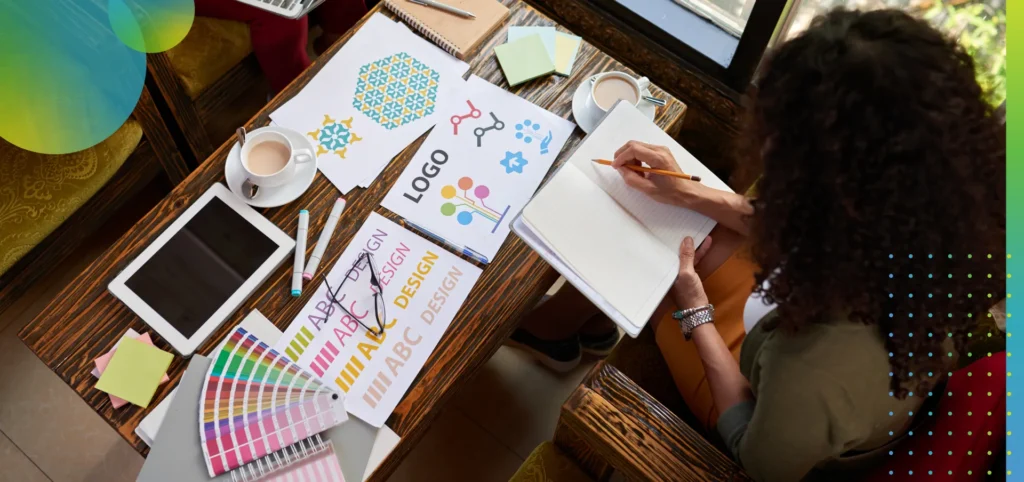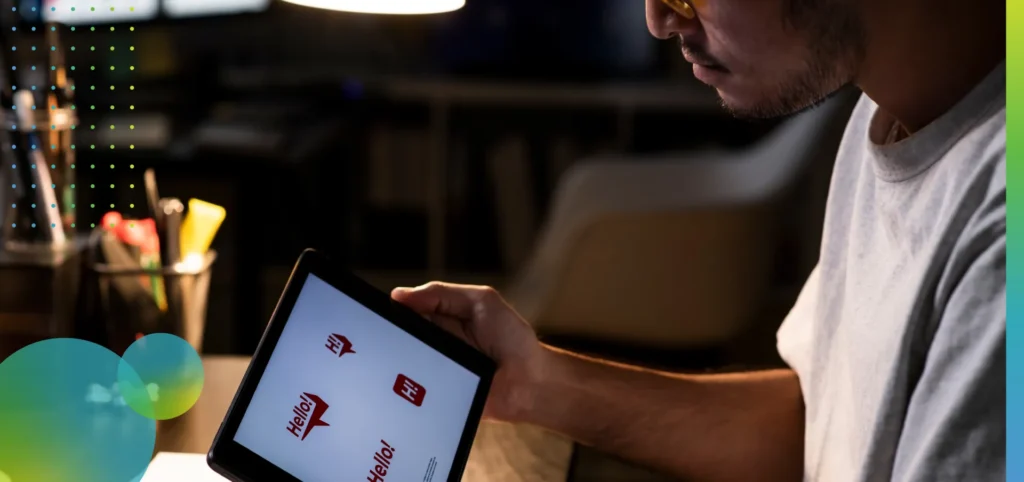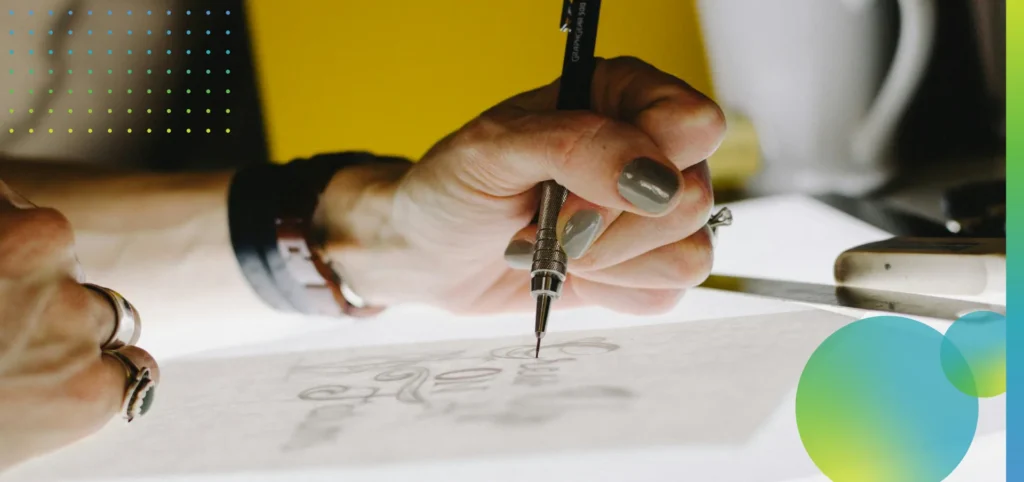Branding is a crucial aspect of any new business strategy, and a professional logo design is half the business branding itself. Most companies don’t just want to sell their products or services. They want to build solutions for common problems.
But still, that doesn’t paint the whole picture of business branding and the practical role of a great professional logo design.
The latter is one of the foundational elements in creating a strong and successful brand. Brand guidelines are essential in ensuring consistency and authenticity in branding, helping to build trust and provide a familiar experience for customers across different platforms.
This blog post will explore the importance of professional logo design in business branding and provide 6 actionable insights to help you elevate your brand identity.
- What is Brand Identity?
- The Importance of Professional Logo Design
- The Elements of an Effective Logo Design
- Hostopia Logo Design: Leveraging Modern Solutions to Build a Brand
- The Branding Process: From Concept to Creation (and Success)
- Implementing Your Logo Across All Brand Assets
- Leveraging Your Logo for Brand Building
- Case Studies: Successful Brand Logos
- Small Business Branding Tips
What is Brand Identity?
Brand identity is all the elements a company creates to portray the right image to its consumers. It encompasses everything from your brand’s logo, colours, typography, and voice to your overall brand story and personality.
We can say that brand identity is the fonts and colour palettes of your site, the tone of your content, the graphics used in marketing materials and packaging, etc.

A strong brand identity is crucial as it helps differentiate your business in a crowded market and communicates your values and mission to your target audience.
The Role of Logo Design in Brand Identity
Your logo is a core component of your brand identity. It encapsulates your brand’s essence and is a key visual element that helps in brand recognition.
A well-designed logo can convey your brand’s message, values, and personality, making it a powerful tool in establishing a strong brand identity. Additionally, a well-designed logo is crucial in creating a recognizable brand that stands out from competitors and establishes brand equity.
Is Branding the Same as Marketing?
It’s obvious that these two are very close, but upon closer inspection, some interesting differences and distinctions become apparent.
You might use bits of the branding we discussed earlier, but your marketing as a whole is how you build a brand. Marketing is about promoting your business and driving sales. It involves strategies and things like advertising, social media campaigns, and content marketing.
In short, a strong branding strategy and branding guidelines set the tone for a successful marketing campaign.
The Importance of Professional Logo Design
Now we’re diving into the main topic: the importance of professional logo design and how access to one can greatly benefit your business branding.

Building Brand Recognition
A professionally designed logo enhances brand recognition. Professional logo design is the perfect web service available to all its partners, allowing their customers to address their main pain points.
Think of iconic logos like Coca-Cola or Apple. These logos are simple, memorable, and easily recognizable. A good logo helps customers identify your brand at a glance, which is essential for building brand recognition.
Establishing Brand Credibility
A professional logo design can really make a difference in how people see your brand.
A well-crafted logo gives off an air of professionalism and trustworthiness, which can help you win over potential customers and build a loyal following. This leads to a consistent and memorable brand for your loyal customers.
Supporting Your Brand Strategy
Your logo should align with your overall brand strategy and reflect your brand’s voice, values, and mission statement. A cohesive brand strategy ensures that all your branding efforts, including your logo, work together to create a consistent and powerful brand image.

The Elements of an Effective Logo Design
Now, let’s explore the major elements that contribute to a professional logo design’s effectiveness on both customers and individuals who encounter your business for the first time.
1. Simplicity
In logo design, embracing simplicity is paramount. A simple logo is not only easier to recognize and remember, but it also conveys a sense of elegance and clarity.
Its uncluttered nature ensures versatility across diverse marketing platforms and materials, allowing it to resonate effortlessly with the audience.
2. Relevance
A logo should seamlessly intertwine with the essence of your industry and the aspirations of your target market.
It should convey your brand’s purpose and resonate with your target customers. Conducting market research and understanding your target audience can help create a logo that is both relevant and appealing.
3. Versatility
A versatile logo is adaptable and works well in different contexts. Whether on your website, social media posts, business cards, or product packaging, your logo should maintain its integrity and readability.
4. Timelessness
While it’s important to stay current and always relevant – a great logo should also be timeless. Avoid overly trendy elements that may quickly become outdated.
Instead, focus on creating a logo that will remain effective and relevant for years. Use elements that will generally not lead you back to the drawing board or make you change your brand story significantly.
5. Uniqueness
A unique logo sets your brand apart from competitors. We could have it higher on this list, but we needed to cover the most important bits of professional logo design for small businesses.
It should broadcast a distinct brand voice and avoid generic design elements that could cause confusion with other brands in the same industry.

Hostopia Logo Design: Leveraging Modern Solutions to Build a Brand
Hostopia offers its partners a logo design service that caters to a wide range of clients.
The expert designers at Hostopia can help choose the best concept for your customers, make suggestions for revisions, and create a logo design that truly represents their business name and branding, tailored specifically to their needs.
Your logo will come in many different formats, including Adobe Illustrator (AI), EPS, JPG, PDF, PNG and ICO.
For more information on Hostopia’s professional logo design and other products and services available for partners, please visit hostopia.com or email us learnmore@hostopia.com.
How Much Does it Cost to Design a Professional Logo?
When it comes to designing a professional logo, cost is always a concern for business owners. However, with Hostopia’s solution, getting a professional logo doesn’t have to break the bank. Our team of designers, with over 10 years of experience, has crafted over 75,000 logos.
We understand the needs of businesses with varying budget constraints, and that’s why we have cost-effective solutions suitable for any budget.

The Branding Process: From Concept to Creation (and Success)
That step is way before even making a logo design for your new startup. It’s about making a complete brand strategy to lay the foundational elements of your brand.
It’s a relatively big but essential process you must do before lifting a finger to create your brand’s logo.
The typical branding cycle involves the following, which we’re going to analyze below:
- Market analysis
- Brand strategy development
- Executing the brand strategy
- Measuring the results of the brand strategy
- Making adjustments to the brand strategy
Now, let’s get more in-depth on each stage of the process.
Conducting Competitive Research
Before designing your logo, it’s crucial to conduct competitive research.
Analyze the logos of successful brands within your industry to understand what works and what doesn’t.
This research can provide valuable insights and help you identify design elements that will differentiate your brand. Effective brand management is essential in maintaining a consistent and powerful brand that stands out from competitors.
Defining Your Brand’s Purpose and Mission Statement
Your brand’s purpose and mission statement should guide your logo design. Clearly define what your brand stands for and what you aim to achieve. This clarity will help in creating a logo that accurately represents your brand’s values and goals.
Brainstorming and Sketching Ideas
Start the logo design process with brainstorming and sketching. Generate multiple ideas and concepts that reflect your brand’s personality and values. Don’t be afraid to explore different styles and approaches.
Refining and Selecting the Best Design
Once you have several concepts, refine and narrow them down to the best options. Consider factors like simplicity, relevance, and uniqueness. Seek feedback from existing customers and potential customers to ensure your logo resonates with your target audience.
Finalizing the Logo Design
After selecting the best design, finalize the details. Ensure that the logo is versatile, scalable, and works well in both colour and black-and-white formats. A professional graphic designer can help with the technical aspects and ensure a high-quality final product.

Implementing Your Logo Across All Brand Assets
Creating a Brand Style Guide
A brand style guide outlines the rules and brand guidelines for using your logo and other brand elements. It ensures consistency in your branding efforts and helps maintain a cohesive brand identity. The style guide should include specifications for logo usage, colour palette, typography, and other visual elements.
Updating Marketing Materials
Update all your marketing materials with the new logo. This includes your website, social media profiles, business cards, product packaging, and any other branded assets. Consistent use of your logo across all touchpoints helps reinforce your brand identity and increase brand awareness.
Communicating the New Branding to Stakeholders
Communicate the new logo and branding updates to your stakeholders, including employees, partners, and existing customers. Explain the rationale behind the new design and how it aligns with your brand’s mission and values. This transparency can help build brand equity and foster customer loyalty.
Leveraging Your Logo for Brand Building
Enhancing Brand Voice and Messaging
Your logo is a visual representation of your brand voice and messaging. It should complement your overall brand strategy and help communicate your brand’s story. Use your logo in conjunction with your brand messaging to create a cohesive and compelling brand narrative.
Developing a Strong Brand Personality
A strong brand personality makes your brand more relatable and appealing to your target audience. Your logo should reflect this personality and be used consistently across all branding efforts. Whether your brand is fun and playful or serious and professional, your logo should convey this personality effectively.
Building Brand Equity and Loyalty
A well-designed logo can contribute to building brand equity and loyalty. By consistently delivering on your brand promise and maintaining a strong brand identity, you can create positive customer perceptions and foster long-term loyalty.

Case Studies: Successful Brand Logos
Coca-Cola
Coca-Cola’s logo is one of the most recognizable in the world. Its timeless design and consistent use over decades have helped build a powerful brand identity.
The logo’s classic script font and red colour palette convey a sense of tradition and enjoyment, aligning perfectly with the brand’s values and mission.
Apple
Apple’s logo is a prime example of simplicity and elegance.
The minimalist design and sleek apple shape with a bite taken out convey innovation and, in part, sophistication. Apple’s consistent use of this logo across all marketing materials and products has made it an iconic symbol of quality and cutting-edge technology.
Nike
Nike’s “Swoosh” logo is a symbol of athleticism and performance. The simple yet dynamic design reflects the brand’s focus on movement and excellence. Nike’s consistent branding efforts and strong brand identity have made the Swoosh a globally recognized logo.
Small Business Branding Tips
Creating a strong and consistent brand identity is essential for ensuring that people easily remember your brand over time.
Investing in Professional Logo Design
For small businesses, investing in professional logo design is crucial. A well-designed logo can set the foundation for a strong brand identity and help you compete with larger, more established brands.
Staying True to Your Brand Values
Ensure that your logo and overall branding efforts stay true to your brand values. Authenticity is key in building a loyal customer base and establishing a successful brand.
Continuously Evaluating and Updating Your Branding
Branding is an ongoing process. Continuously evaluate your branding efforts and be open to updates and refinements. As your business grows and evolves, your branding should reflect these changes while staying true to your core values and mission.
Conclusion
As we said in the article, a professional logo design is one of the critical components of successful branding.
It’s really important to have a well-designed logo as it’s like the face of your brand. It helps people recognize and trust your brand.
By creating a strong brand, you can make sure that it really connects with the people you’re trying to reach.
It’s worth investing in a professional designer to create your logo and make sure that it reflects your brand values. Keep refining your brand to make sure it stays strong and successful in the long term.
To effectively serve your customers, consider utilizing Hostopia’s Professional Logo Design service. Thousands of partners have access to Hostopia’s web solutions, allowing their clients to leverage the best technology available to boost their businesses.
For more information on Hostopia’s professional logo design and other products and services, please visit hostopia.com or email us learnmore@hostopia.com.

